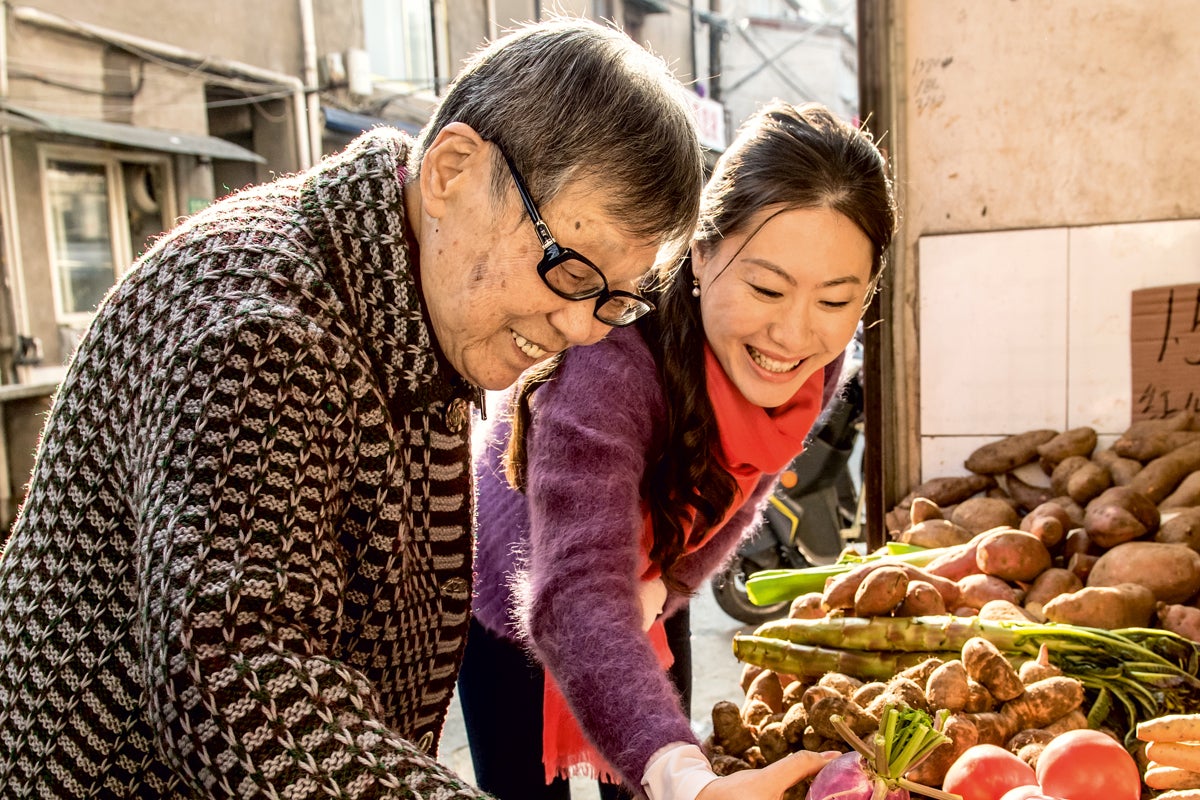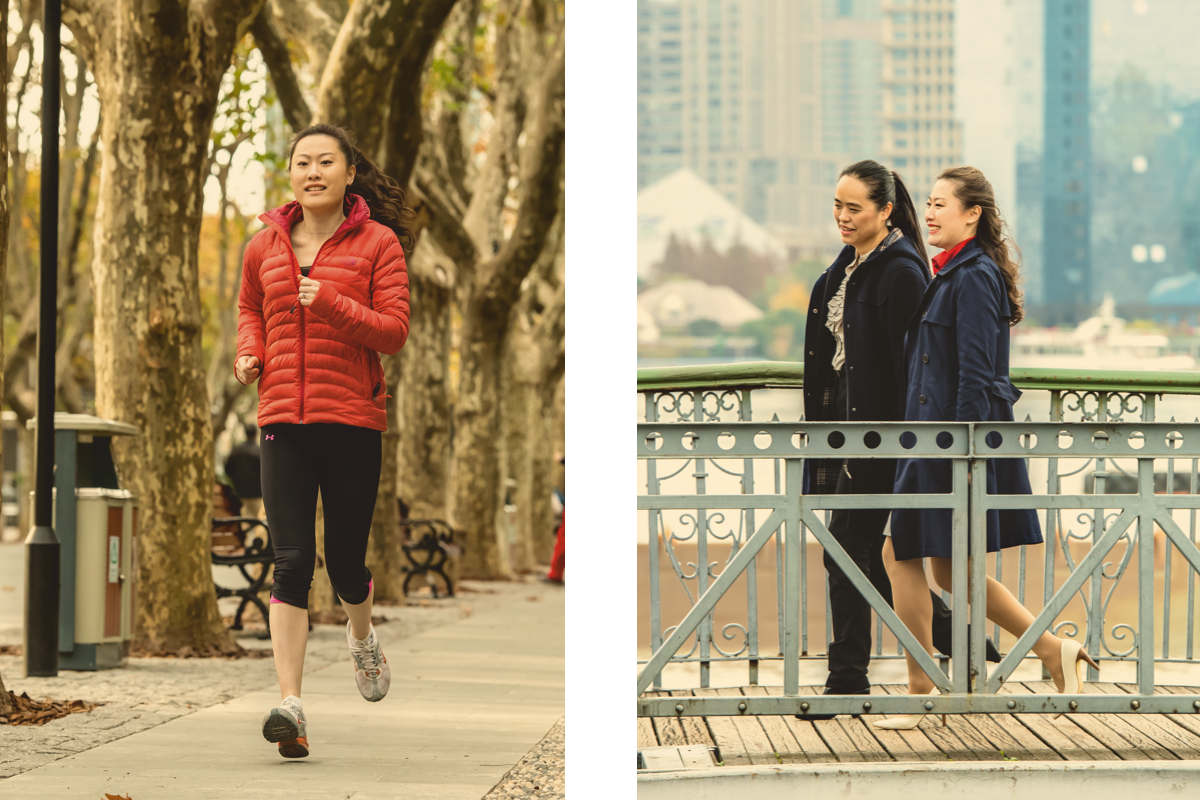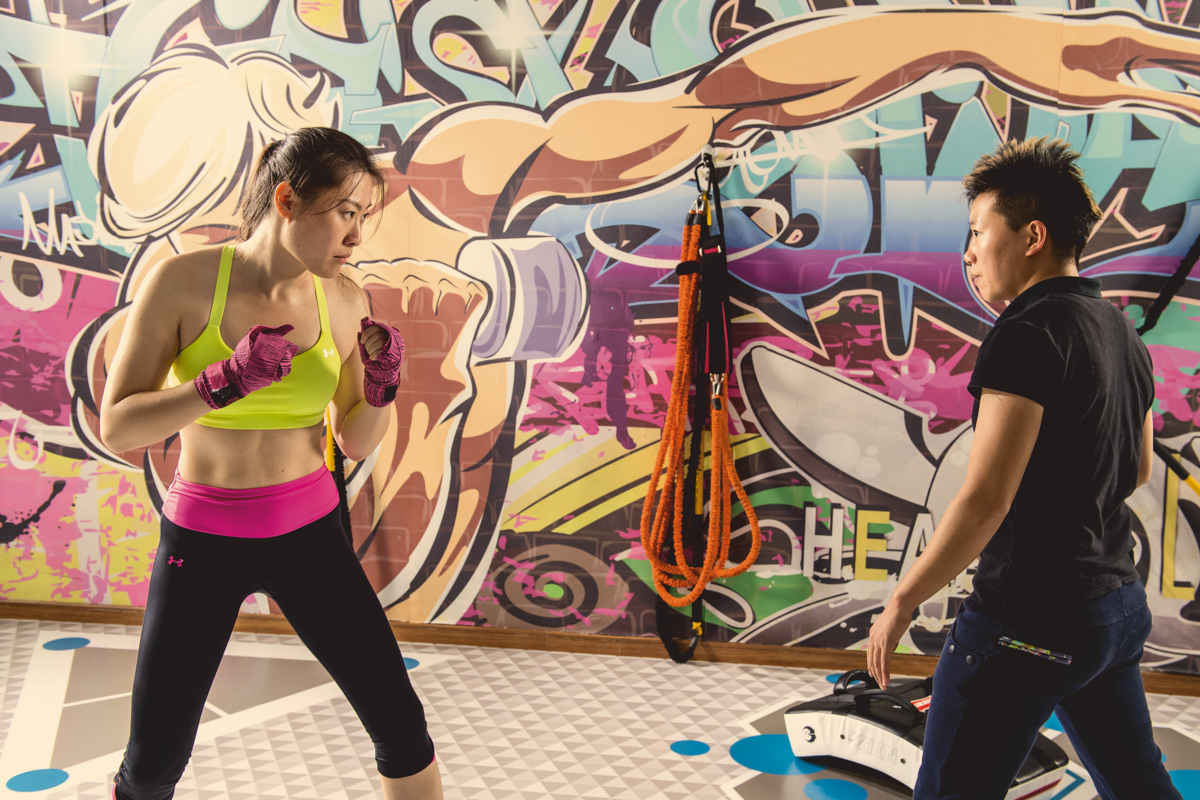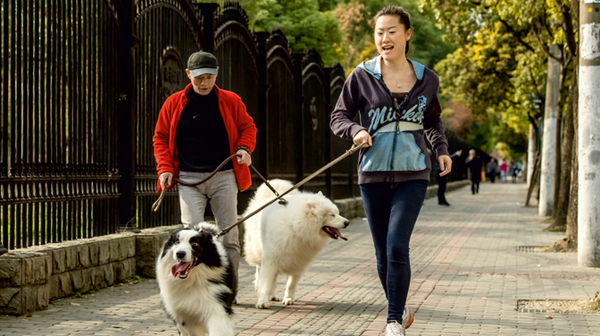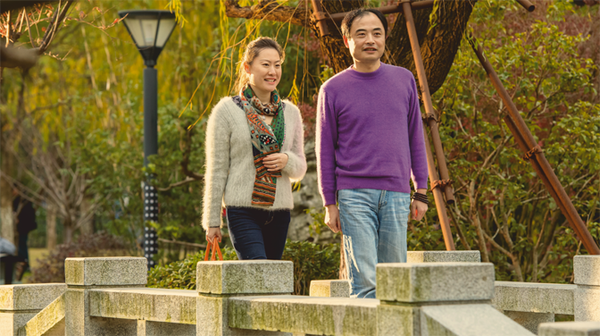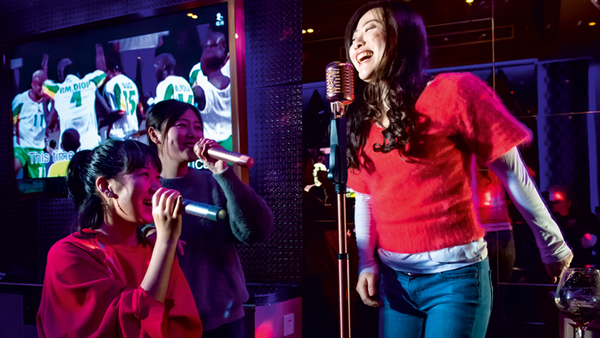Enjoying good health
My day begins with a look at my smartphone smog app. The air quality in Shanghai is often very poor. That is the negative side of rapid economic growth. Some people stay at home when there is smog, but I don’t want to let it affect my everyday life. All the more reason to make sure I live a healthy lifestyle.
For me, nutrition is everything, and we Chinese learn that at a very early age. My breakfast has to be nutritious: rice porridge with dumplings or fried eggs. That gives me energy. For lunch, I go out to eat with my co-workers, or I take a lunch pack with me from home to the office, since we sometimes have leftovers from the evening before. When my father cooks, he uses seasonal and fresh ingredients. We eat a lot of vegetables and fish, and not very much pork. For several years now, I have given up eating dinner altogether. That might seem unusual, but I feel much healthier when I do this. I would never smoke. However, I do have one weakness: cake.
I go to the gym twice a week after work: one hour of strength training, one hour of boxing with a trainer. I take private lessons. I treat myself to this luxury. When I started boxing, I primarily wanted to get my body in shape. Now, I can’t live without it. Whether I’m having a stressful time at work or have other things on my mind – after my boxing session, I always feel liberated, like a new person.
When I travel, I try to discover new sports. Last summer, in Malaysia, I took a diving course. In the winter, I visited a friend in Geneva and took a five-day ski course in the Alps. On the first day, I fell over all the time. I was exhausted physically and was really frustrated. On the second day, I was about to give up and pretended to have a headache so I wouldn’t have to go. But I was determined to not give up and went back to the slope on the third day. I was confident that I could master this.
„Shanghai offers plenty of opportunities for anyone with ambition and ideas. I am enjoying this stage of my life, and I look forward to what the future holds.“
On the fourth and fifth day, I was able to race down the whole slope on my skis. I felt a great sense of achievement. Next on my to-do list: rock climbing, sky diving, and surfing.
In addition to my sessions at the gym and my activities on vacation, I integrate as much exercise as possible into my daily routine. On days when I don’t go to the gym, I get out of the subway one station earlier after work and walk the rest of the way home, which takes about 40 minutes. On theweekend, I take our dogs for walks in the morning and evening. When I am old, I want to be as fit as my grandmother. She is 93 years old and looks like she’s in her early seventies. She still does all her own laundry every day, chops and cooks vegetables, and sweeps the floor. I want to age like her.
Small muscle, lots of movement - Modern therapy for the heart and vessels
The heart is a miracle of endurance. During 80 years of life, it beats around three billion times, pumping about 185 million liters of blood through the vessels. It provides the body with oxygen, nutrients, minerals, vitamins, hormones and other important substances. It must never rest, because even a small interruption can be life-threatening. But as tireless and resilient as the heart is: according to the World Health Organization (WHO), cardiovascular disease is the leading cause of death in adults. The reasons for heart disease are diverse: little exercise, ty food, alcohol and nicotine, medication, mental stress – but also simply because people are getting older.
Heart vessels and valves are susceptible
One of the most common heart diseases is the calcification of the coronary arteries. The heart doesn’t work well when the heart muscle is not supplied adequately. In the case of sudden vascular occlusion, a heart attack may occur. The heart valves are also vulnerable. These valves ensure that the blood flows in the right direction. Heart valve defects are either congenital or form during the course of life. If heart disease is present, the blood is no longer transported efficiently through the body.
Fortunately, the treatment of hereditary diseases has made great progress in recent years. For a long time, the only option was opening the chest (thorax) in cardiac-thoracic surgery. In the meantime, interventions are less and less invasive. This is now also possible with operations on the heart valves. The surgeon tries to retain the heart valve if possible. If it cannot be reconstructed, he inserts a mechanical or biological heart valve. B. Braun innovations support the repair and maintenance of heart valves in various ways, including our Aesculap® EinsteinVision® 3D Full HD camera system, which offers great advantages for the surgeon as well as the patient. For certain indications, the surgeon does not have to open the chest – but still has the operating field in view. For this purpose, he places small surgical accesses between the ribs and uses special instruments, including an endoscope camera. Using the differentiated 3D imaging, the surgeon can now see the treatment location clearly and with depth, which allows the valve to be repaired or replaced in a confirned space.
In intensive and continuous interactions with surgeons and medical personnel, B. Braun has developed additional equipment that significantly simplify an operation and reduce the risk of possible secondary damage. For example, there are the XS instruments for minimally invasive heart valve surgery or Valve XS Atrium retractor system, which allows the surgeon free access and a clear view of the operating field. These minimally invasive procedures are typically much more gentle for patients than the classic open procedure.
Minimally invasive procedures instead of major operations
Methods of interventional cardiology are also developing. Until recently, surgeons have had to apply one or more bypass bridges in narrowed or blocked vessels, today there are procedures that in many cases can be used to avoid a major operation. For example, the doctor introduces a balloon catheter into the narrowed vessel and can thus expand the diseased areas deliberately. Stents are often implanted. These are wire meshes, which serve to splint the vessel from inside and keep it open.
B. Braun has been involved in interventional cardiology for many years. It is our greatest desire to respond to the needs of physicians and patients alike in order to develop pioneering solutions such as innovative stents and balloon catheters. Despite technical progress, conventional methods and instruments cannot prevent the formation of excessive scar tissue after vessel surgery, which in turn limits blood flow. Therefore, we developed the Coroflex® ISAR stent system in cooperation with the German Heart Center Munich. It continuously releases a drug which prevents these undesirable reactions and as is often the case does not use polymer carriers, so no plastic remains in the patient’s body4. Similarly, the drug-coated balloon catheter SeQuent® Please releases a growth-inhibiting agent and reduces scarring. As is the case with catheter treatments, this procedure is also performed under local anesthesia. The patient can leave the hospital after a short time. No matter where our diverse innovations are applied, one thing is always the same: B. Braun is committed to reducing risks, suffering and pain.
„After my boxing session, I feel like a new person.“
